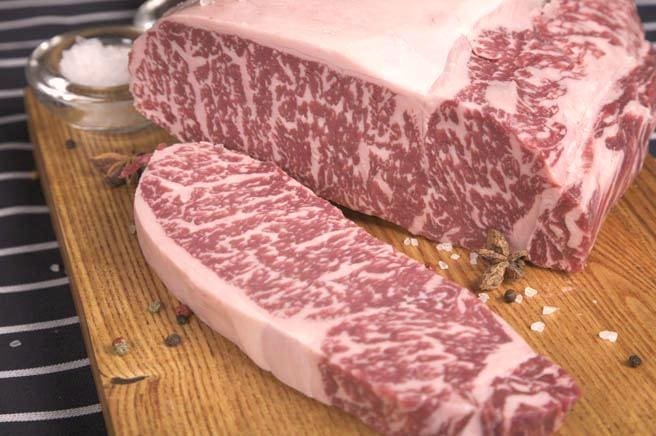THE recent focus by the Australian Competition and Consumer Commission on the food sector will soon shift to the Wagyu beef industry.
The Australian Wagyu Association has been formally advised by the ACCC that it intends to investigate truth in labelling and product claims in the Wagyu beef sector.
 As the most expensive and highly-prized beef on the market, one of the ‘crosses’ that the Australian Wagyu industry has had to bear is a heightened risk along the supply chain of unscrupulous stakeholders mislabelling, substituting, or embellishing the quality of the product, for financial reasons.
As the most expensive and highly-prized beef on the market, one of the ‘crosses’ that the Australian Wagyu industry has had to bear is a heightened risk along the supply chain of unscrupulous stakeholders mislabelling, substituting, or embellishing the quality of the product, for financial reasons.
There’s nothing new in that, and it is a challenge that the Wagyu industry has been attempting to address for some years.
AWA president Scott de Bruin said it was not a great surprise to the industry that the ACCC had made contact, given the attention the corporate watchdog had directed on the food industry over the past couple of years.
“It’s clear that the ACCC has been targeting the food industry quite specifically,” he said. “Given that Wagyu is the pinnacle of the red meat industry, it was perhaps inevitable that this would happen at some stage.”
The timing of the ACCC action comes coincidentally, just after the Wagyu industry has launched its own set of voluntary standards surrounding breed content claims.
The development came into focus during the AWA’s annual conference and general meeting on the Gold Coast on the weekend.
Members were told that the ACCC had recognised that the AWA had already ‘done a lot of work’ in the truth in labelling and product description space. That has involved defining trade descriptions, building and launching a verification program and encouraging members to use it.
Mr de Bruin told members that with the large and growing use of Wagyu genetics in the Australian beef industry, a clear requirement for accurate descriptors had been identified.
AWA Wagyu trade descriptions had been developed, based on Wagyu breed classification by content. The descriptors have since been endorsed by the Australian Meat Industry Language and Standards Committee and AusMeat.
The trade descriptors have been circulated to AWA members and their adoption, while voluntary, recommended.
From the descriptors, a voluntary Wagyu breed verification program has been developed and a trial program has been released to members for adoption. The program is entirely breed content based – unlike earlier, unsuccessful attempts to deliver a verification package that also carried minimum standards on marbling.
The verification categories released recently include:
- Wagyu Fullblood – 100pc (Japanese genetics, nil crossbreeding in the pedigree)
- Purebred Wagyu – F4 93+pc minimum Wagyu genetic content
- Crossbred Wagyu F3 – 87+pc content
- Crossbred Wagyu F2 – 75pc content
- Crossbred Wagyu – 50pc content.
Some stakeholders still feel the use of the word ‘Purebred’ to describe the second category leaves a window open for confusion, arguing that consumers have no intimate understanding of the distinctions between words like ‘Fullblood’ and ‘Purebred.’
Eighty percent of large supply chain partners exposed to the new program, representing about 40pc of all Australian Wagyu cattle on feed, advised the AWA that they ‘would’ or ‘might’ use the program.
“The program will deliver live animal verification services, right through to the brand owner producing boxed beef,” Mr de Bruin said. “The system can provide integrity and assurance through the value chain.”
Importantly, the current program verifies only up to the point of boxed beef, as it is impossible for the AWA’s program to influence decisions and actions beyond that point. That responsibility falls more directly with brand managers themselves to police.
The proposed verification program was discussed recently with ten of the largest Wagyu producers/brand owners in Australia, receiving a high level of endorsement.
“They described the program as being robust, sound, having good principles, technically feasible and consistent with other programs in similar industries,” AWA chief executive Graham Truscott told members on Saturday.
Some years ago, a comprehensive set of minimum standards was developed at considerable time and expense, based on minimum marbling as well as breed content. The proposal was dramatically withdrawn at the last minute from a vote among members at that year’s AWA’s annual meeting, when it became apparent that the proposal did not have the support of the majority of members.
The key sticking-point in the earlier model was over the right of the breed society to be ‘prescriptive’ over minimum marbling standards for what could be described as ‘Wagyu’. Opponents argued that minimum standards on marbling was a commercial, brand-owners issue, and should not involve a breed society.
Mr De Bruin said the latest version of the standards launched to members recently was based solely on breed content.
“We tried to use the terminology that stakeholders in the industry are already widely using,” he said.
“It was important to make it as clear as possible. The main emphasis is on making sure that that message, and integrity, is being passed on down the value-chain,” he said.
“AWA is not in the business of selling Wagyu meat. There are plenty of good brands out there that do a good job of that, and it is important that we, as a breed society, do not adopt something that is unnecessarily prescriptive, in an area like marbling minimum standards that is really a brand manager’s responsibility.”
“All that we are attempting to do is pass on advice to our members on consistent trade descriptors on breed content.”
Overseas challenge
While the ACCC’s interest in Wagyu product description is confined specifically to product sold within Australia, many stakeholders would argue that the risk of substitution or misdescription is far greater in the international market, once the product leaves brand-owners’ hands, than within Australia.
Mr de Bruin said the Australian Wagyu industry had largely been founded on export, and perhaps 70 or 80 percent of all product labelled ‘Australian Wagyu’ was currently sold on the international market.
“At the end of the day, what the AWA has always said is that truth in labelling is the most important consideration. Producers, themselves, are doing a good job, but that commitment just needs to continue right through the value chain.”
CEO Graham Truscott said the AWA was taking a leadership role in protecting the Wagyu brand integrity both domestically and internationally.
“One of the two key goals at our International Wagyu Conference in Yeppoon next May is going to be Wagyu integrity, because we want the world to start using the trade descriptions we’ve put forward. Without it, the product’s reputation runs the risk of being damaged,” Mr Truscott said.
At least one prominent Australian Fullblood Wagyu supply chain manager has withdrawn their product from the China export market, because of the rampant amount of substitution and mislabelling going on, and the potential damage that may cause to their brand integrity.
“We may not be able to change the world, but we think we can have a strong influence, in ensuring it is correctly described, by breed content, on the carton,” Mr Truscott said.
One of the weapons in the Wagyu industry’s armoury is DNA traceability, with a mandatory DNA sample on every beast claimed within the five categories. All Wagyu registered sires are automatically sampled for DNA fingerprint and parent verification. A random sample of 5pc of all animals sold under the verification program will be subjected to DNA parent verification, and later, a percentage Wagyu content test currently being perfected, to verify each consignment.
A 10pc failure rate will see the whole batch rejected. Cost will be $6 a head, relatively cheap compared with the previous proposal, which was as high as $22 a head.
ACCC’s new focus on food sector
The ACCC’s activities in the food space have commanded headlines recently, including a $300,000 fine imposed as a result of investigations into a free-range raising claim prosecuted recently through the Federal Court.
The Court fined poultry company Pirovic Enterprises and ordered it to contribute to the ACCC’s legal costs over allegations that the company tried to pass-off poultry products as ‘free range’ when the animals were housed in barns.
It was the first time a Court has defined what constitutes a ‘free range’ claim and ACCC chair Rod Sims said the findings would have repercussions across the whole food industry.
“Whether it is free-range ham, beef, pork or bacon, the Court has now established what a reasonable consumer would think a raising claim like free-range means,” Mr Sims said.
“This has implications for anyone using that term in relation to animals and animal products.”
The ACCC says it will soon take legal action against several more egg processors on the same issue, and recently prosecuted a pork producer over similar truth in labelling raising claims.




Welcome news … not before time ! There has been substitution in the meat industry for years.
While they are on the job, perhaps they should tell the market that crab stick is in fact tripe artificially coloured and flavoured !
And don’t start me on fish … Gippsland whiting can be mullet, and that is just the start of it !
Not sure I’d believe the crab stick one, Peter. There are very specific food laws over species description, and easy ways to test any meat protein for species. I’d always understood crab sticks were made from Sirimi. Search ‘What is Sirimi?’ on Google. Editor